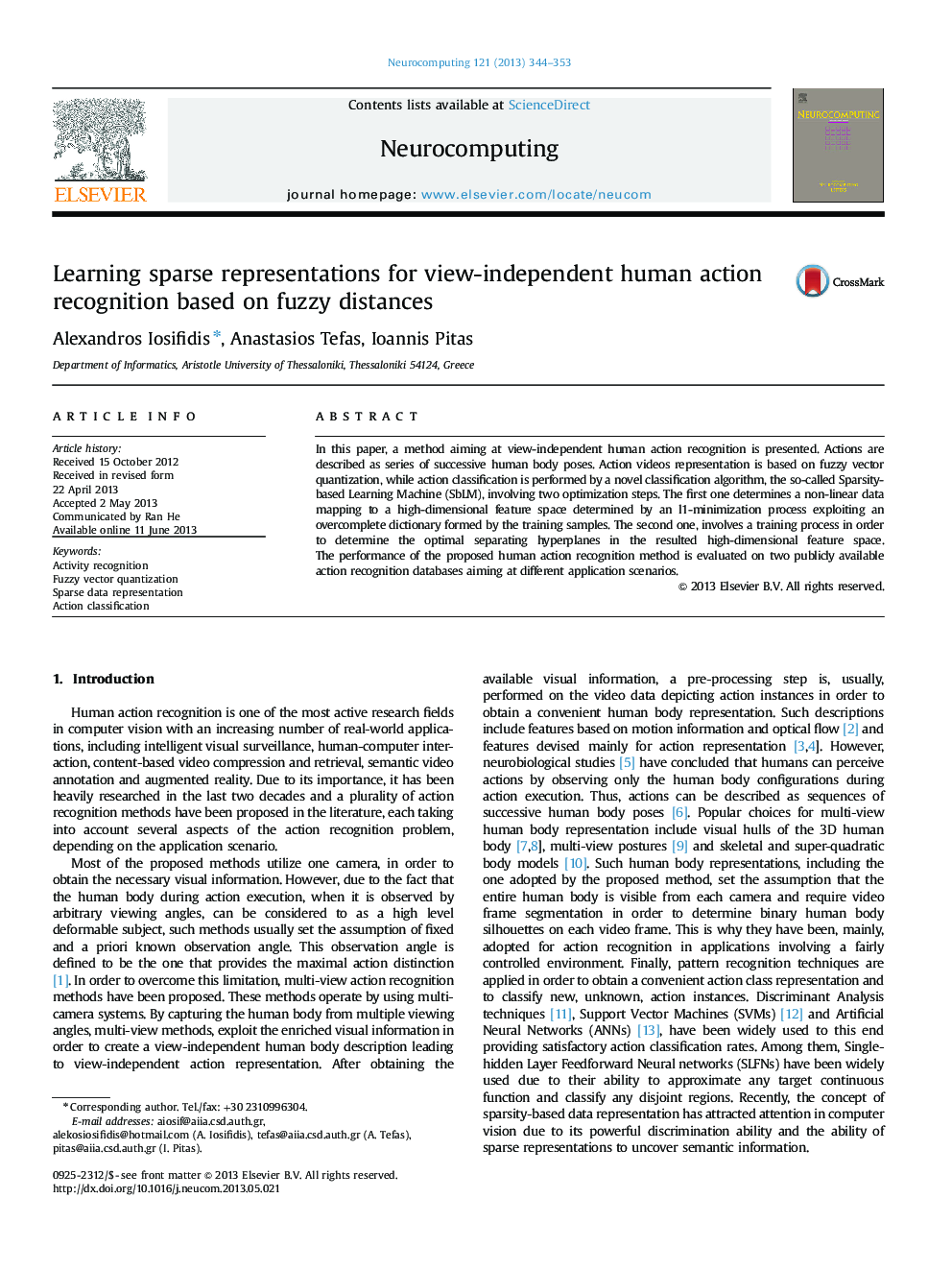| Article ID | Journal | Published Year | Pages | File Type |
|---|---|---|---|---|
| 406730 | Neurocomputing | 2013 | 10 Pages |
In this paper, a method aiming at view-independent human action recognition is presented. Actions are described as series of successive human body poses. Action videos representation is based on fuzzy vector quantization, while action classification is performed by a novel classification algorithm, the so-called Sparsity-based Learning Machine (SbLM), involving two optimization steps. The first one determines a non-linear data mapping to a high-dimensional feature space determined by an l1-minimization process exploiting an overcomplete dictionary formed by the training samples. The second one, involves a training process in order to determine the optimal separating hyperplanes in the resulted high-dimensional feature space. The performance of the proposed human action recognition method is evaluated on two publicly available action recognition databases aiming at different application scenarios.
